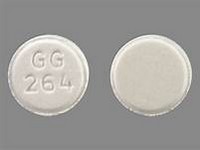imatinib

imatinib
CLINICAL USE
Antineoplastic agentDOSE IN NORMAL RENAL FUNCTION
400–600 mg daily, increasing to a maximum of 400 mg twice dailyPHARMACOKINETICS
DOSE IN RENAL IMPAIRMENT
GFR (mL/MIN)
DOSE IN PATIENTS UNDERGOING RENAL REPLACEMENT THERAPIES
IMPORTANT DRUG INTERACTIONS
Potentially hazardous interactions with other drugsADMINISTRATION
Reconstition
–Route
OralRate of Administration
–Comments
–OTHER INFORMATION
Associated with oedema and superficial fluid retention in 50–70% cases. Probability is increased in patients receiving higher doses, age >65 years, and those with a prior history of cardiac disease. Severe fluid retention (e.g. pleural effusion, pericardial effusion, pulmonary oedema and ascites) has been reported in up to 16% of patients. Can be managed by diuretic therapy, and dose reduction or interruption of imatinib therapySevere elevation of serum creatinine has been observed in approximately 1% of patientsOral bioavailability is 98% Main circulating metabolite is N-demethylated piperazine derivative, and has similar potency to the parent compound. Catalysed by cytochrome P450 CYP3A4. Mainly hepatically metabolised with 68% excreted in faeces and 13% in urine in 7 days. Half-life is 40 hours in normal renal function.
See how to identify renal failure stages according to GFR calculation
See how to diagnose irreversible renal disease
Home








